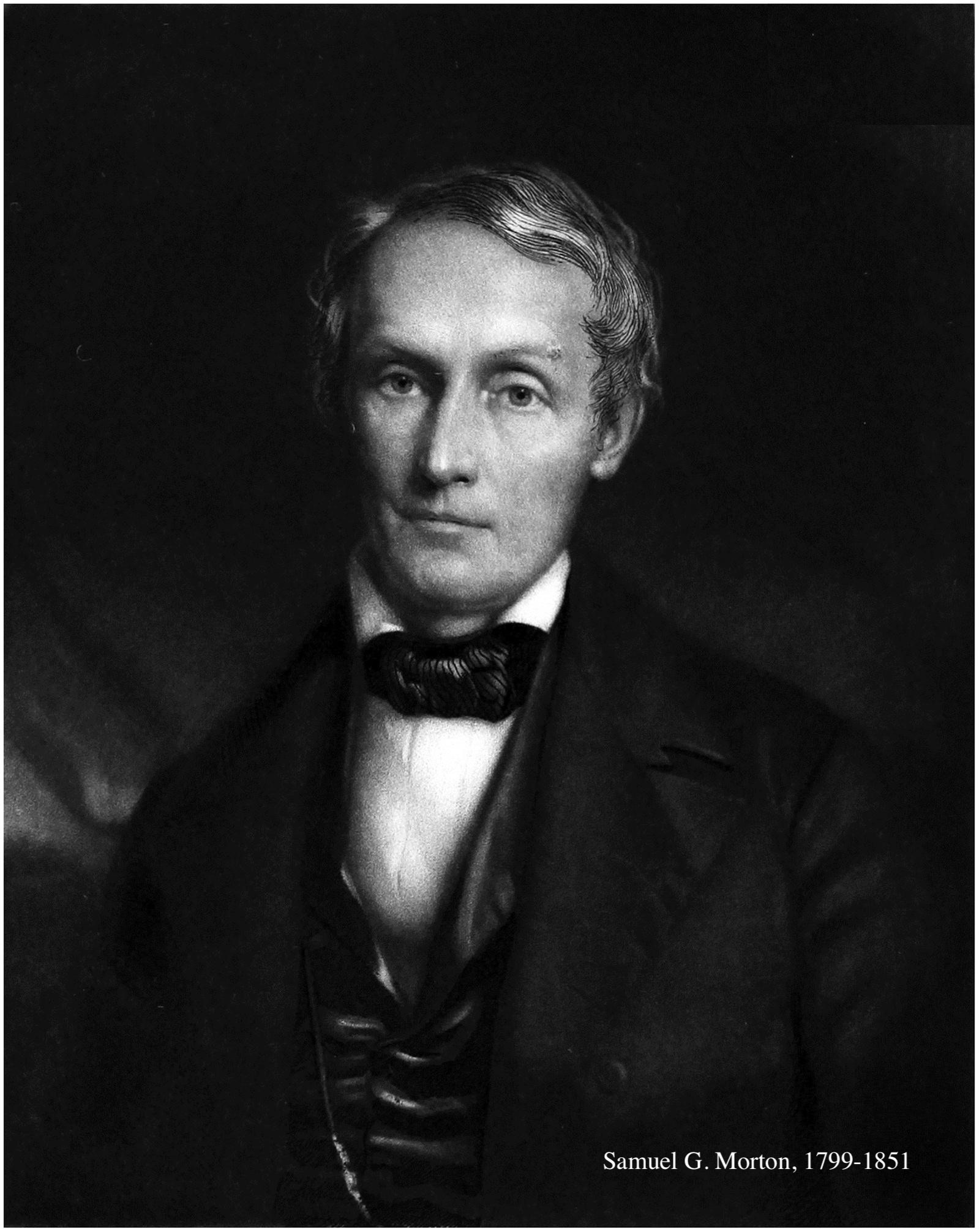
ペンシルヴァニア博物館の返還への取り組み
REPATRIATIONS
by Penn Museum of the University of Pennsylvania

世界の先住民遺骨返還運動を調べると、遺骨が地元の 埋葬地から「収奪」されてきた経緯や、それを正当化する「科学の論理」、そして「遺骨はすべからく返還 すべし」という結論に運動の当事者たちが到達するまでは、長く複雑な経緯がありました。遺骨や副葬品を「取り戻す」先住民の思想も実践(作戦)も日々深化 していると言っても過言ではありません。その理由は、世界の先住民同胞が、時には先住民が帰属する国家を巻き込んで、先住民への搾取や差別の実態、そして 略奪行為がなされてきたことを訴えて、博物館や大学・研究機関に遺骨や「文化的略奪物(cultural loot)」の返還を要求してきたことにあります(池田 2000)。またそのような返還要求が現在の政治哲学や国際関係論という観点からみてもまったく正義に叶ったものであることが明らかになってきました (シャプコット 2012)(→「遺骨や副葬品を取り戻しつつある先住民のための試論」より)。
●ペンシルヴァニア博物館の返還への取り組み(REPATRIATIONS by Penn Museum.)
| Penn
Museum Apologizes For 'Unethical Possession Of Human Remains' April
27, 20214:07 PM ET, By Peter Crimmins |
|
| Dozens of human skulls of Black
people — some hundreds of years old — will be returned to their
communities of origin for reburial, according to a commitment by the
University of Pennsylvania's Museum of Archeology and Anthropology. Last week, the Penn Museum issued both an apology for possessing the skulls in its historic Morton Collection, and outlined a plan to repatriate them. "The Penn Museum and the University of Pennsylvania apologize for the unethical possession of human remains in the Morton Collection," wrote Christopher Woods, who became the new director of Penn Museum on April 1. "It is time for these individuals to be returned to their ancestral communities, wherever possible, as a step toward atonement and repair for the racist and colonial practices that were integral to the formation of these collections." The Morton Cranial Collection includes nearly 900 human skulls obtained during the early 19th century by a Philadelphia scientist named Dr. Samuel Morton, who sought to determine racial differences. He measured their cranial cavities — the part where the brain sits — by filling the skulls with peppercorns, then emptied them out and measured the volume of the seeds. Morton believed a larger cranial cavity indicated better intelligence. He used his data to lend scientific support to white supremacy, which he wrote about in his 1839 book, Crania Americana. Morton is sometimes referred to as the "Father of Scientific Racism." |
ペンシルベニア大学考古学・人類学博物館の公約によると、数百年前の黒
人の頭蓋骨数十個が、元の地域に戻され、再埋葬される予定であることが明らかになりました。 先週、ペンシルベニア大学博物館は、歴史的なモートン・コレクション[Samuel George Morton]にある頭蓋骨を所有していたことに対する謝罪と、それらを送還するための計画の概要を発表しました。 「ペン博物館とペンシルバニア大学は、モートン・コレクションの人骨を非倫理的に所有していたことを謝罪します」と、4月1日にペン博物館の新館長に就任 したクリストファー・ウッズは書いています。「これらのコレクションの形成に不可欠であった人種差別と植民地支配に対する贖罪と修復の一歩として、可能な 限りこれらの人々を先祖代々のコミュニティに戻すべき時である」。 モートン頭蓋コレクションは、19世紀初頭にフィラデルフィアの科学者サミュエル・モートン博士が人種の違いを明らかにするために入手した約900体の人 間の頭蓋骨を含んでいます。彼は、頭蓋骨にコショウの実を詰めて頭蓋腔(脳のある部分)を測定し、それを空にして種の体積を測定しました。 モートンは、頭蓋腔が大きければ知能が高いことを示すと考えた。モートンは、頭蓋腔が大きいほど知能が高いと考え、そのデータを使って白人至上主義を科学 的に支持し、1839年の著書『クラニア・アメリカーナ』にそのことを書きました。モートンは、「科学的人種差別の父」と呼ばれることもあります。 |
| Today, brain size is not
considered proof of higher intelligence, and Morton's racist
conclusions are not accepted by the scientific community. At issue now
is the way he acquired the skulls: mostly from grave robbers. About a
dozen are believed to have been dug out of a potter's field in
Philadelphia where poor African Americans had been buried. Over 50 more
were exhumed from a graveyard of African slaves in Cuba. "It was gathered unethically. None of it was with consent. These folks couldn't consent, given their position in society," said Abdul-Aliy Muhammad, a Philadelphia activist. When Muhammad learned of the Morton skulls two years ago, at an event presented by the Penn & Slavery Project, he felt it in his own bones. "My body was hot. My heart was pounding. I was really enraged, really angry at knowing this information," he says. Muhammad is among those demanding that the skulls be repatriated from the museum, which has held them since 1966. As one of the largest collections of historic human skulls in America, the Morton Collection has been used by modern researchers to study more benign things like the effects of diet and disease on the anatomy. The origins of the collection, which was expanded after Morton's death in 1851, has never been secret: during a public lecture in 2011, Penn Museum Keeper of Physical Anthropology Janet Monge called Morton a "flaming racist." Many of the skulls were kept in a glass case inside a classroom until last summer, when, under pressure from activists, the museum removed them and began seriously considering how to address the problem they represented. |
今日、脳の大きさは高い知性を証明するものではないと考えられており、
モートンの人種差別的な結論は科学界に受け入れられてはいない。今問題になっているのは、モートンが頭蓋骨をどのように入手したかであり、そのほとんどは
墓荒らしからである。その多くは墓荒らしからである。約12個は、貧しいアフリカ系アメリカ人が埋葬されていたフィラデルフィアの陶芸家の畑から掘り出さ
れたと考えられている。さらに50体以上が、キューバのアフリカ人奴隷の墓地から掘り出されたものです。 "非倫理的に集められたものだ。そのどれもが、同意のもとに集められたものではありません。フィラデルフィアの活動家アブドゥル・アリー・ムハンマドは、 「彼らは社会的な立場を考えると、同意することができなかったのです」と語った。 2年前、Penn & Slavery Projectが開催したイベントでモートンの頭蓋骨のことを知ったムハンマドは、自分の骨でそれを感じた。 「私の体は熱くなった。心臓がドキドキした。この情報を知ったことで、私は本当に激怒し、怒りを覚えたのです」と彼は言う。 ムハンマドは、1966年以来、頭蓋骨を保管している同博物館からの返還を要求する人々の一人である。 a 歴史的な人間の頭蓋骨を集めたアメリカ最大級のコレクションであるモートン・コレクションは、現代の研究者が食事や病気が解剖学に与える影響など、より穏 やかな研究を行うために使用されています。 1851年にモートンが亡くなった後に拡張されたこのコレクションの起源は、決して秘密ではありません。2011年の公開講座で、ペンシルベニア博物館の 身体人類学キーパー、ジャネット・モンジュはモートンを "燃える人種差別主義者 "と呼んでいます。多くの頭蓋骨は、昨年夏まで教室内のガラスケースに保管されていましたが、活動家たちの圧力により、博物館はそれらを撤去し、それらが 象徴する問題にどう対処するかを真剣に検討しはじめました。 |
| "It was the direct result of the
killing of George Floyd, the rise of Black Lives Matter," said Woods.
"This is what brought this issue to the forefront." This month, Woods released a plan to form a new committee that will assess and determine how each skull will be repatriated: to Cuba, to communities in Philadelphia, and — if appropriate — to Africa. The committee will include people from Penn's offices of Social Equity and Community, Government and Community Affairs, the University Chaplain and General Counsel. Hobby Lobby's Smuggled Artifacts Will Be Returned To Iraq THE TWO-WAY Hobby Lobby's Smuggled Artifacts Will Be Returned To Iraq Some activists who have been rallying for the repatriation of the skulls welcome the move, but think it does not go far enough. "Penn admits that this is harmful. That's useful as an apology. But I think the apology has to be more robust," says Muhammad. "There's a commitment to a conversation with community, but we want a commitment to have the community on this committee, and not just Penn people. Right now, as it stands, [it] is only Penn staff." Muhammad is also demanding that all scientific data collective from the skulls — collected both by Morton and any researcher thereafter — not be used, as the data was not collected by consent of its subjects. One of the challenges of sending these skulls back where they belong is determining where exactly that is. Dr. Morton keep very little information about the people to whom these skulls belonged, other than their race. "The pseudo-scientific research that he conducted was to justify white supremacist views of race," Woods says. "That was the one element of this that he was interested in. So those individuals are identified by race." These were not just not consensually acquired, they were in many cases violently acquired: graves robbed, scavenged from battlefields, taken from gallows across the world. In a collection with that kind of history, it's necessary to really forefront the wishes of the descendant community with regard to what's to be done with these remains. Paul Wolff Mitchell, fellow of the Penn Medicine and the Afterlives of Slavery Project The process by which the remains will be repatriated will be modeled after the federal Native American Graves Protection and Repatriation Act (NAGPRA). However, unlike Native American remains, which are often associated with a known tribe, these skulls are essentially cut off from their own history. Take the example of a skull from an African slave in Cuba — the rest of the skeleton is still buried in Cuba, but while alive that person had been stolen from Africa, his native land. So where does the skull go? The repatriation process will involve a combination of professional research and consultations with relevant communities to determine the best way to lay the bones to rest with dignity. "These were not just not consensually acquired, they were in many cases violently acquired: graves robbed, scavenged from battlefields, taken from gallows across the world," says Paul Wolff Mitchell, a PhD anthropology candidate and a fellow of the Penn Medicine and the Afterlives of Slavery Project. "In a collection with that kind of history, it's necessary to really forefront the wishes of the descendant community with regard to what's to be done with these remains." |
"ジョージ・フロイドの殺害、ブラック・ライブズ・マターの台頭が直接
的な原因だった "とウッズは言う。"これがこの問題を前面に押し出したのです。" 今月、ウッズは、それぞれの頭蓋骨がどのように送還されるのか、キューバ、フィラデルフィアのコミュニティ、そして-適切であれば-アフリカへの送還を評 価し決定する新しい委員会を結成する計画を発表しました。この委員会には、ペンシルベニア大学の社会的公正と地域社会、政府および地域社会問題、大学チャ プレン、法律顧問の各オフィスから参加する予定です。 頭蓋骨の本国送還を求める活動家の中には、この動きを歓迎する人もいますが、十分とは言えないと考えています。「ペンシルベニア大学は、これが有害である ことを認めています。それは謝罪の言葉として有効です。しかし、その謝罪はもっと強固なものでなければならないと思います」と、ムハンマドは言う。「コ ミュニティとの対話という約束もありますが、ペンの関係者だけでなく、コミュニティもこの委員会に参加させるという約束が欲しいです。今、現状では、(委 員会は)ペンのスタッフだけです。" ムハンマドはまた、モートンやそれ以降の研究者によって収集された、頭蓋骨から集められたすべての科学的データを使用しないよう要求しています。 これらの頭蓋骨をあるべき場所に戻すことの難しさのひとつは、それが一体どこなのかを見極めることです。モートン博士は、これらの頭蓋骨が属していた人々 について、人種以外の情報をほとんど持っていません。 「彼が行った疑似科学的な研究は、白人至上主義的な人種観を正当化するためのものでした」とウッズは言います。"それが、彼が興味を持った一つの要素だっ たのです。だから、それらの個人は人種によって識別されるのです。" 墓を奪い、戦場からかき集め、世界中の絞首台から持ち出すなど、多くの場合、同意の上ではなく、暴力的に入手されたものです。このような歴史を持つコレク ションでは、これらの遺骨をどうするかについて、子孫のコミュニティの意向を真正面から受け止める必要があるのです」。 ポール・ウォルフ・ミッチェル(ペンシルベニア州立大学医学部と奴隷の後遺症プロジェクト研究員 遺骨の送還プロセスは、連邦政府の「アメリカ先住民の墓の保護と送還に関する法律(NAGPRA)」に倣うことになる。 しかし、ネイティブ・アメリカンの遺骨は、その部族が特定されていることが多いため、頭蓋骨はその歴史から切り離されることになります。キューバのアフリ カ人奴隷の頭蓋骨を例にとると、残りの骨格はまだキューバに埋葬されていますが、その人物は生きている間に祖国であるアフリカから盗まれていたのです。で は、その頭蓋骨はどこに行くのでしょうか? 送還のプロセスでは、専門的な調査と関連するコミュニティとの協議を重ね、尊厳を持って骨を安置するための最善の方法を決定します。 「ペンシルベニア大学医学部と奴隷制の後遺症プロジェクトのフェローであり、人類学博士候補のポール・ウォルフ・ミッチェルは、「これらの遺骨は、同意の 上で入手したものではなく、多くの場合、暴力的に入手しました。「このような歴史を持つコレクションでは、これらの遺骨をどうするかについて、子孫のコ ミュニティの意向を正確に把握する必要があります」。 |
| https://www.npr.org/2021/04/27/988972736/penn-museum-apologizes-for-unethical-possession-of-human-remains |
|
| Penn
Museum announces the repatriation of the Morton Cranial Collection he University of Pennsylvania Museum of Archaeology and Anthropology has announced its action plan regarding the repatriation or reburial of ancestors, including the remains of Black Philadelphians within the Samuel G. Morton Cranial collection. This plan is based on an April 8, 2021 report outlining recommendations from the Morton Collection Committee, which was formed in August 2020; the Committee’s report is being publicly released on April 12, 2021. Collected in the first half of the 19th century by Samuel G. Morton whose research was used to justify white supremacist views, the collection was moved from the Drexel Academy of Natural Sciences of Philadelphia to the Penn Museum in 1966. It is currently housed in storage in the Museum’s Physical Anthropology Section. “The Penn Museum and the University of Pennsylvania apologize for the unethical possession of human remains in the Morton Collection.” Christopher Woods, the Penn Museum Williams Director, said. “It is time for these individuals to be returned to their ancestral communities, wherever possible, as a step toward atonement and repair for the racist and colonial practices that were integral to the formation of these collections. We will also reassess our practices of collecting, stewarding, displaying, and researching human remains.” The Morton Collection Committee was composed of museum leadership, staff, anthropologists, and students who have been comprehensively evaluating next steps for repatriation and reburial since last summer. The Committee’s report documents an action plan as well as fundamental community involvement and resources required for implementation. “An initial phase of rigorous evaluation was critical for ensuring an ethical and respectful process around repair. As we move into implementation, the Museum will immediately begin the process of working with local communities to understand their wishes for repatriation.” Woods explained. In addressing the remains of Black Philadelphians, the Museum will now charge a new committee that includes members from Penn’s offices of Social Equity and Community, Government and Community Affairs, the University Chaplain, General Counsel, and others to explore options for reburial in a historically Black Philadelphia cemetery. A new infrastructure for assessing repatriation and reburial requests, which will include community consultation at every stage is also being established. The process will be modeled after the Museum’s NAGPRA (Native American Graves Protection and Repatriation Act, 1990) program, which has a 30-year track record of proactively informing and consulting Native peoples and returning relevant materials. The Museum will also work with Penn’s School of Arts and Sciences to create a new full-time faculty position for a BIPOC bioanthropologist. This person will have expertise in the analysis of human remains with a record of advocacy for Black and Indigenous matters in repatriation requests and hold a dual position as Museum curator and faculty member in the Department of Anthropology. “There is no ‘one size fits all’ approach to handling repatriation and reburial in any circumstance.” Woods clarified. “Each case is unique and deserves its own consideration. This is incredibly sensitive work. And while we all desire to see the remains of these individuals reunited with their ancestral communities as quickly as possible, it is essential not to rush but to proceed with the utmost care and diligence. As we confront a legacy of racism and colonialism, it is our moral imperative to do so.” |
ペン・ミュージアム、「モートン頭蓋コレクション」の返還を発表 ペンシルベニア大学考古学・人類学博物館は、サミュエル・G・モートン頭蓋コレクション内のフィラデルフィア黒人の遺骨を含む祖先の送還または再埋葬に関 する行動計画を発表しました。この計画は、2020年8月に結成されたモートン・コレクション委員会の勧告をまとめた2021年4月8日の報告書に基づく もので、委員会の報告書は2021年4月12日に一般公開されます。 19世紀前半、白人至上主義を正当化するために研究を行ったサミュエル・G・モートンによって収集されたこのコレクションは、1966年にフィラデルフィ アのドレクセル自然科学アカデミーからペン美術館に移されました。現在は、同博物館の身体人類学部門に保管されています。 "ペン博物館とペンシルバニア大学は、モートン・コレクションの人骨を非倫理的に所有していたことを謝罪します。" ペンシルベニア博物館ウィリアムズ館長のクリストファー・ウッズは、次のように述べています。"これらのコレクションの形成に不可欠であった人種差別的、 植民地的な慣行に対する償いと修復への一歩として、可能な限り、これらの個人を先祖のコミュニティに戻すべき時です。私たちはまた、遺骨の収集、管理、展 示、研究に関する私たちの実践を見直すことになるでしょう。" モートンコレクション委員会は、博物館のリーダーシップ、スタッフ、人類学者、学生で構成され、昨年の夏から、返還と再埋葬のための次のステップを包括的 に評価してきました。委員会の報告書は、行動計画、および実施に必要なコミュニティの基本的な関与と資源を文書化しています。 「最初の段階での厳格な評価は、修理にまつわる倫理的で尊重されたプロセスを確保するために重要でした。実施に移すにあたり、博物館は直ちに地域社会と協 力し、返還に対する彼らの希望を理解するプロセスを開始します。" とウッズは説明しています。 フィラデルフィアの黒人の遺骨について、博物館は、ペンシルベニア大学の社会的公正とコミュニティ、政府およびコミュニティ問題、大学チャプレン、法律顧 問などのメンバーを含む新しい委員会を立ち上げ、フィラデルフィアの歴史的に黒人の墓地への埋葬の選択肢を検討することになりました。 また、あらゆる段階でコミュニティとの協議を含む、返還と埋葬の依頼を評価するための新しいインフラストラクチャも確立されつつあります。このプロセス は、30年にわたり先住民への積極的な情報提供と協議、関連資料の返還を実施してきた博物館のNAGPRA(1990年アメリカ先住民墓地保護・送還法) プログラムをモデルにしています。 また、博物館はペンシルベニア大学芸術科学部と協力し、BIPOC生物人類学者のための新しいフルタイムの教授職を創設する予定です。この人物は、人骨の 分析に関する専門知識を持ち、返還の要請において黒人や先住民の事柄を擁護した実績を持ち、博物館のキュレーターと人類学部の教員を兼任することになりま す。 "どのような状況でも、送還と改葬を扱うのに「一長一短」のアプローチはありません。" とウッズは明言した。「それぞれのケースはユニークで、独自の配慮が必要です。これは非常に繊細な仕事です。そして、私たちは皆、これらの人々の遺骨が一 刻も早く先祖代々のコミュニティと再会することを望んでいますが、急ぐのではなく、細心の注意と勤勉さを持って進めることが肝要です。人種差別と植民地主 義の遺産に立ち向かう私たちにとって、それは道徳的な義務なのです。" |
| https://penntoday.upenn.edu/news/penn-museum-announces-repatriation-morton-cranial-collection |

Samuel
George Morton (January 26, 1799 – May 15, 1851)
++
+++
Links
リンク
文献
その他の情報
Copyleft, CC, Mitzub'ixi Quq Chi'j, 1996-2099
☆
 ☆
☆